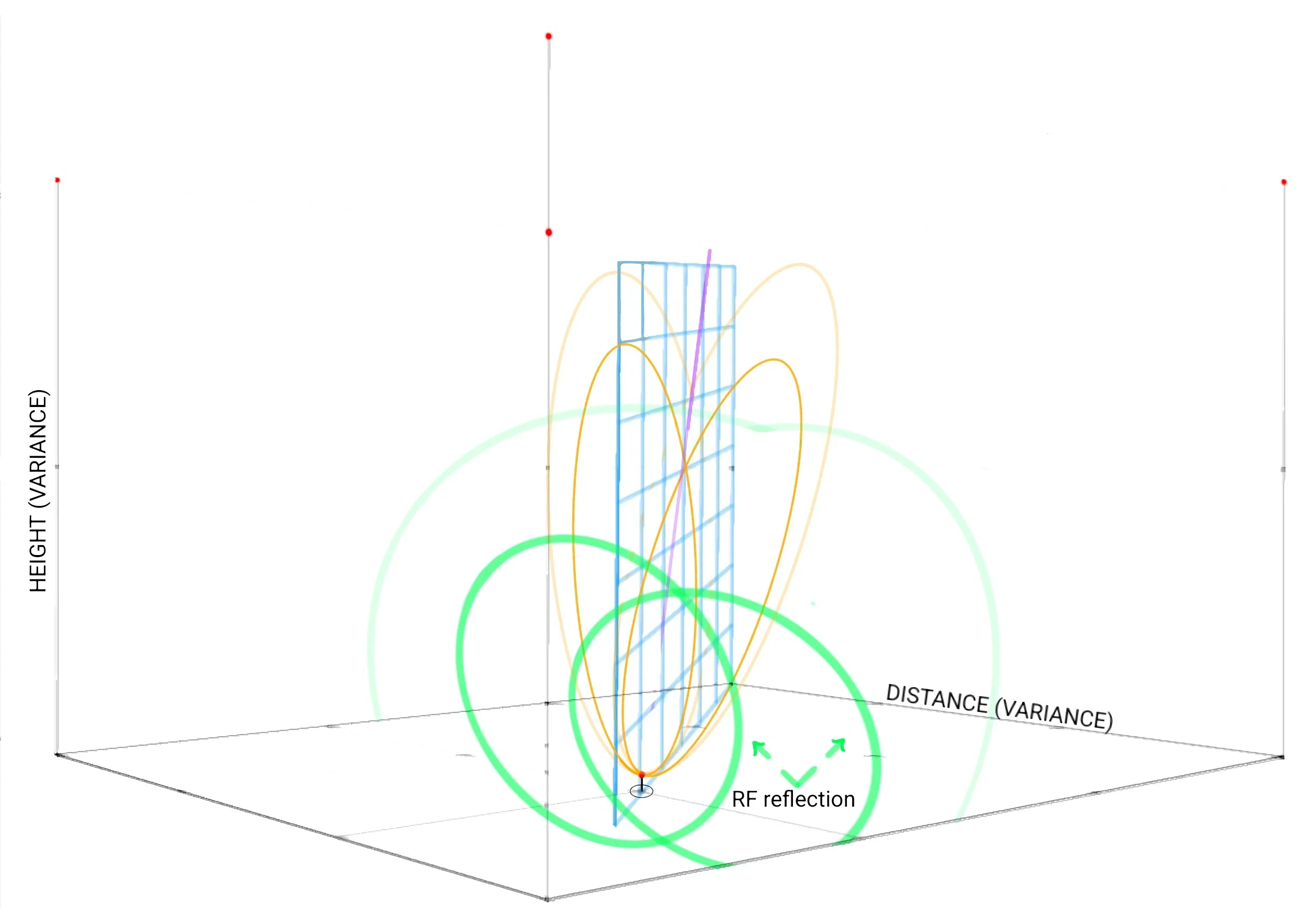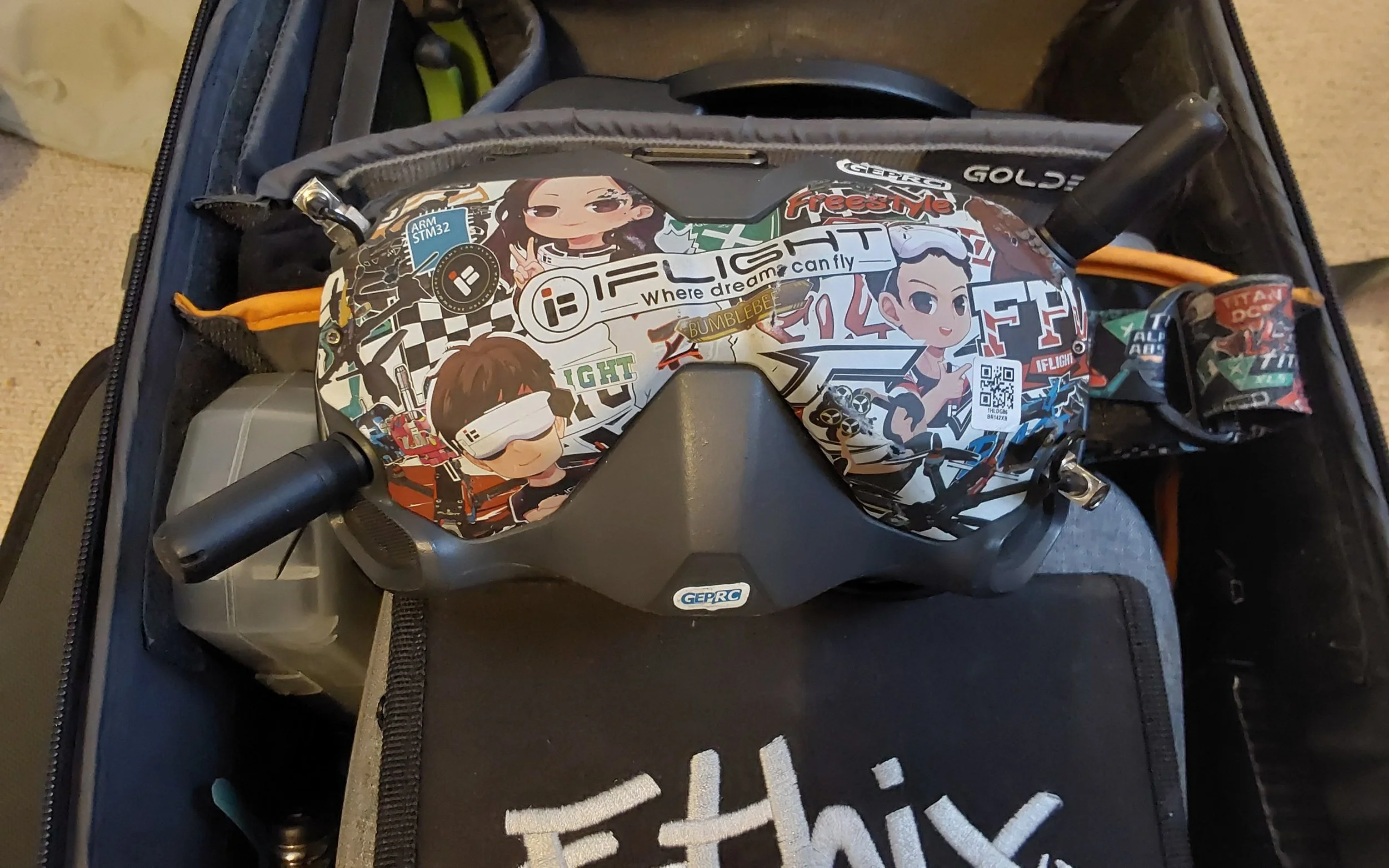Staying safe in the air with varied RF (Radio Frequency) antenna and power setting configurations is pivotal in airspace. In the United Kingdom this fact is especially true in densely populated areas of the country, often exhibiting complicated airspace and crowds. Like many other avid drone enthusiasts I remember the faults in my first drone flight. In March 2018 in the UK we had a fair bit of snow so I updated the drone and waited to fly. One sunnier morning, following the final snow downpour the night before I took off with my first ever drone the GoPro Karma drone. This type of drone I'll refer to as a ‘traditional’ drone. This specific drone is sadly now discontinued and effectively grounded through software updates, mainly due to its age and a lack of on-going support. This particular drone does however remain flying, albeit virtually on a favourite game of mine - Steep! Conditions that snowy morning were good but cold and as a novice I went straight to one of the well known pre-programmed maneuvers stored on the controller; a linear altitude gain in a reverse motion. This automated flight mode provided the freedom to walk around and is an absolutely perfect example of how a novice would pilot a drone. This is mainly due to its inherent nature to increase user distraction multiplying the risk factor. This automation provides an easier user experience, in my opinion however we would all be much safer with less choice in automated flight path options programmed into consumer drones. Especially if regulations are to modernise.
FPV (First Person Video) drone flight is in what seems like perpetual ambiguity with aviation authorities. Varying goggle antenna configuration and allowing consumers to gain a clearer understanding of what's going on ‘under-the-hood’ would be significant. I know this coupled with keeping focus on the OSD (On Screen Display) has enabled me to minimise drone loss greatly over the years.
Varying your FPV antenna configuration can affect your RF video signal in RC (Radio Controlled) flight. This consideration in the v1 goggles helps educate, increase safety of use and provides variance in any given terrain. Those of you that have tried or seen a traditional drone flying may know there is a fair bit of automation with the aid of GPS (Global Positioning System) satellites. This differentiation also separates LOS (Line of Sight) traditional drone flight and what is the preferential, FPV (First Person Video) perspective. This handholding GPS metric is in order to provide an increased safer authority over the consumer's aircraft in the air whilst simplifying the controls - reducing barriers for entry. A nice analogy I've often heard and used to help portray the differentiation to people is that manual transmission in a car is akin to (FPV flight) and automatic car transmission is similar to traditional GPS reliant drone flight. This latter option is often slower, less dynamic in flight characteristics and more like a ‘flying selfie stick’. Having flown the GoPro Karma drone inside with no GPS, I can safetly safe the drift was substantial! The maximum flexibility in configuration is also often very limited, think consumer capitalism with drones, their proprietary components and the resulting reliance on a professional repair service if you are to damage your expensive purchase. Ultimately though gravity is an unavoidable risk when flying any type of drone.
This traditional method limits the acrobatic capability and therefore the resulting video footage. Every accomplished FPV pilot will be aware of flight modes at this point. An FPV drone is most definitely the alpha in this situation. Some industries are already utilising drone automation, predominantly agriculture and warehouse management. As of yet I've not seen this in practice, however it is clear some businesses will be able to benefit from it and others currently remain without.
Initial GPS satellites such as the Iridium network; established in the late 90s, revolutionised telecommunication systems for remote areas allowing explorers and sometimes natives to be connected and stay safe with little or no infrastructure on the ground. In the last decade or so varying satellite deployments in LEO (Low Earth Orbit) have developed and continue to be important for developing higher bandwidth requirements back here on Earth. One technological example specific to this article being ‘3D-GPS fix’. Specific to FPV drone flight this functionality requires a GPS module to be installed on the FPV drone and the use of it is not without minor complications in configuration and activation. Although, with the correct configuration and enough satellites acquired at take off you can have a better chance of saving a FPV drone when flying over simple terrain such as water hazards at sea. Incorrect usage/configuration will result in un-safe and unpredictable flight results. Therefore we come full circle to the original question and subsequential gain in understanding of your FPV goggle antennas, the associated power settings and the resulting RF dispersion in any given terrain. In addition, not forgetting how positioning of your head and radio can impact this variability in video bandwidth (and in my example for this article, DJI’s RC link too).
I was an early adopter to DJI’s Digital FPV telemetry system. This system runs on a varying multi-channel single band (starting at 5.4/5.6+GHz) and testing was in hindsight therefore very balanced.
The 3D diagram depicts an open area unaffected by other RF signals with diagonally positioned omni-directional placement on the coaxial i/o. iFlight’s Crystal HD patch antenna was also patched diagonally into the DJI v1 goggles too - https://shop.iflight.com …Thanks for your support :-)
3D diagram key
Green: Bold omni-directional strong, faint - weaker following signal degradation
Gold: Bold linear-directionally strong, faint - weaker following signal degradation
Purple: Linear patch ‘indicated’ null zone (at very extended distances)
Red: Circles are an indication of absolute limits in drone flight altitude
Arrows: RF reflection more applicable in non-porous surfaces
N.B - The below diagram is not to scale. When the drone is turned toward the pilot the RF signal strength will be reduced somewhat - an important consideration when at an extremity of RC distance.
3D diagram of RF coverage
The above and below image(s) shows what years of ad-hoc testing has resulted in, bearing in mind what DJIs v1 goggle’s original circuitry and accompanying Rx/Tx programming (of the top and bottom rows of antenna) is. The normal procedure for FPV pilots when positioning RF antenna is to assume symmetry, as is common in most other applications. There are a few reasons as to why my antenna configuration is optimal. In varied terrain utilising both RF antennae (and their associated of polar patterns) provides flexibility - this is a given for most who are familiar. The next consideration in this configuration is due to obstructions including the human body and at long distances the drone too. Standing in position is preferable and staying fixed like a statue is another variable. In an environment such as one with a concrete ground or a hard floor (think rocky beach) you can obtain stronger reflections on one side and therefore a decreased diffusion rate. This is accomplished whilst maintaining some RF penetration upwards where RF signal could be presenting a higher diffusion rate due to obstructions blocking or reflecting the signal. Give it a try and see what you think…
I’ll be posting a video demonstrating this soon!
DJI Goggles V1 with optimum antenna configuration



